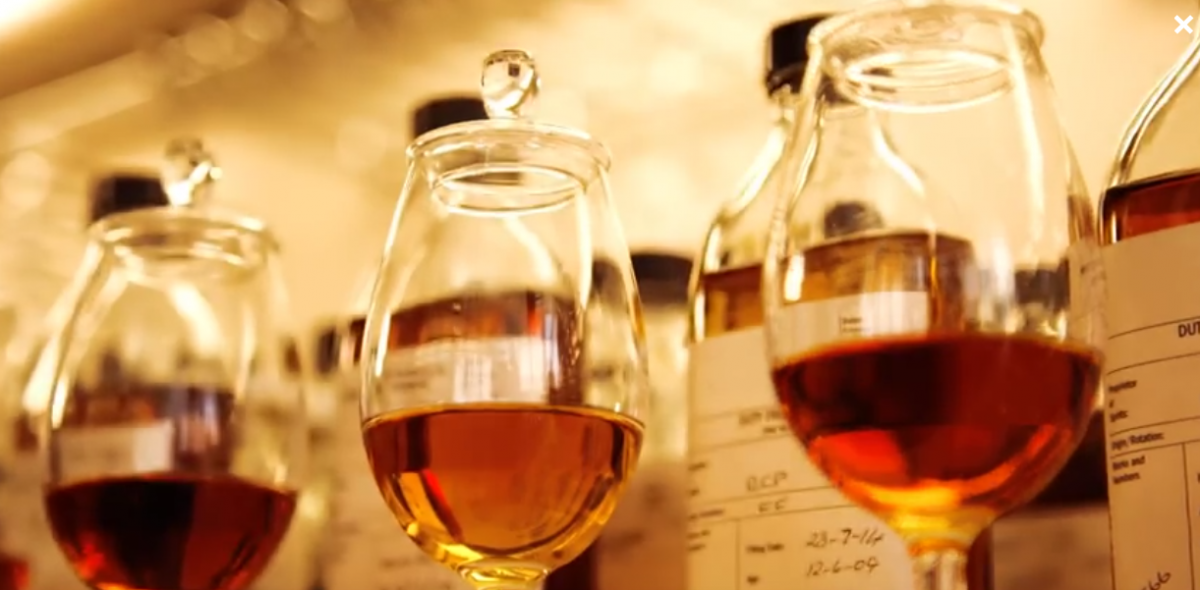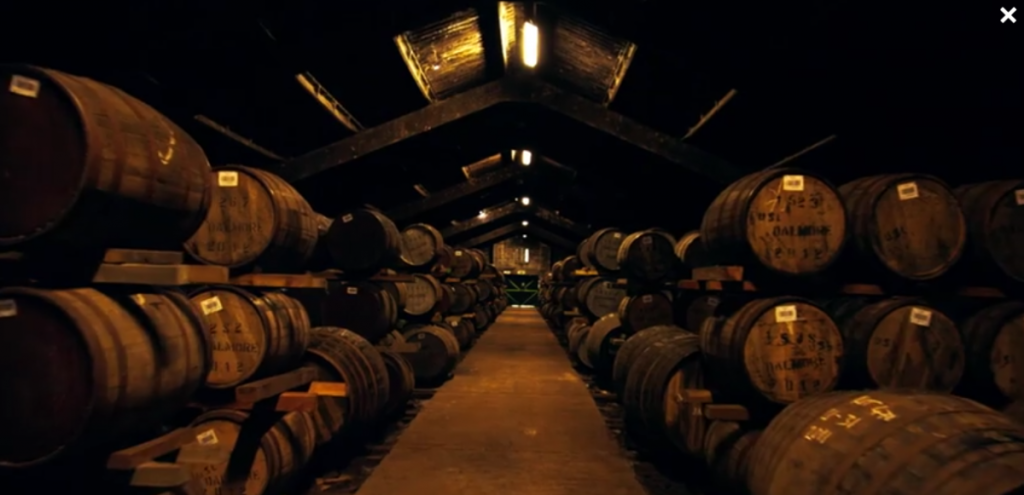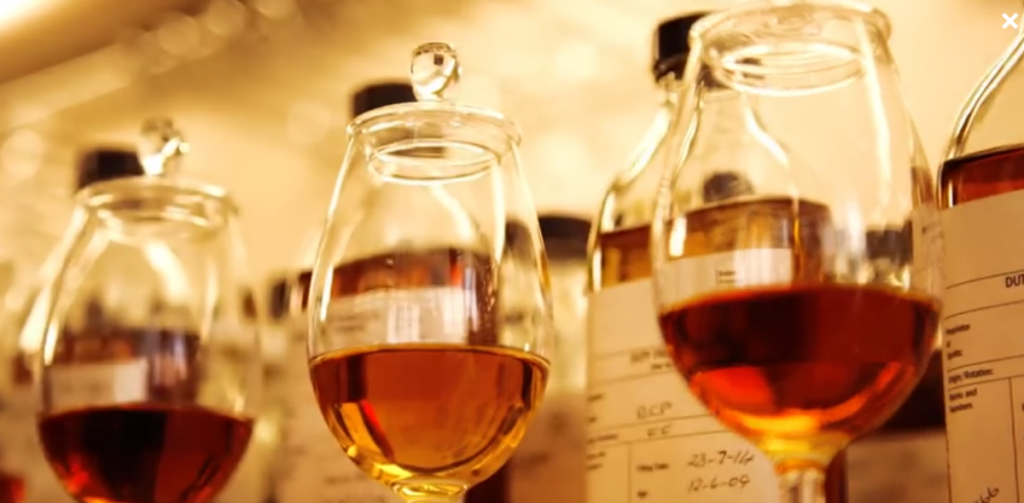
#268
NOTHING LESS THAN DALMORE
27 Nov 2015 By Ben Chin
Rare Whisky Director Jonathan Driver introduces The Dalmore and explains what makes a whisky rare, and oh so expensive.
After almost two decades as the Global Malts Director of the world’s biggest spirit producer Diageo, where does one go from there? For Jonathan Driver, it was to take on the luxury whisky portfolio at Whyte & Mackay as their new Rare Whisky Director. In town recently for the 5th Masters of Wines and Spirits hosted by DFS, Driver talks to us about flagship brand The Dalmore.
Founded by Alexander Matheson in 1839, the highland distillery in the North-east of Scotland had always been a small-scale one, for a host of historical and financial reasons. Today, renowned for its unique combination of rich full-bodied smoothness and fruitiness, it has chosen to remain small, so as not to tamper with the whisky stills and risk changing the whisky profile inextricably.
The Dalmore Valour, The Dalmore Pioneer Edition, exclusive to DFS, and The Dalmore King Alexander III were all available for tasting on the first weekend of the month-long exhibition. Designed by Master Distiller Richard Paterson, Driver explains that for the travel-exclusive Valour, port pipes from Graham’s Tawny Port were used to finish the whisky, adding richness to its taste profile. “You want sparkle in your whisky, you never want a dull one.” The pursuit of a flavourful whisky is what characterises the brand: “The heart of Dalmore is the use of fortified wine casks,” he adds.
In commemoration of SG50, the impressive Five Decades collection of five different expressions was also launched. At $160,000 for a collection of nine bottles, it’s as luxurious as whisky gets. Part of the reason for its impressive price tag is the sheer rarity. As the name suggests, the collection comprises of bottles of different decades including the only 50 year old Dalmore in existence. There wasn’t a luxury whisky market until a decade ago, until travel retail transformed the marketplace for spirits in the 1970s, with consumers that were becoming increasingly sophisticated. Thanks to the fine wine industry which trained consumers to recognise and understand vintages, the demand for rare whiskies grew. Dalmore soon increased percentage of whisky set aside for aging, changing their core business model from focusing on 12 years and 15 years to managing them as valuable assets.

The Dalmore is the only distillery in the world permitted to use select aged casks.
Although the consumers’ terms of reference come from the wine industry, Driver warns that evaluating whisky solely on age is a misleading concept. Aging whisky longer doesn’t necessarily make it better – whisky is continually changing in the cask due to expansion and contraction during summer and winter respectively. The cask has extractive properties as well as additive, taking away juvenile qualities like harshness and adding mellowness. Left too long, however and the process will start to strip away the qualities that should be retained and adding unwanted dimensions.
What compounds the difficulty is the total lack of an algorithm to the aging process. Driver jokes that it is the “most insane industry” where certain casks can lose more alcohol from evaporation than others for no discernible reason. “You constantly have to be on top of things all the time. The rarest commodities you own – you’d want them to retain the their unique qualities. They have to be cared for for decades, with constant intervening and monitoring.” Vintages are also more meaningful with wines, where a poor grape harvest can affect both the quality and quantity of the year’s output, but with barley, a diminished harvest will only affect supply. As Driver explains, it is entirely possible to create high quality whisky even without premium quality barley.

The American white oak ex-bourbon casks, sourced from the Ozark mountains in Kentucky, impart flavours of intense vanilla, spice, honey and tropical fruits.
The Dalmore Pioneer Edition is a DFS-exclusive, launched to celebrate SG50 as well. Driver describes it as a stepping stone towards an experimentation with wine that will culminate in 2016. Using muscatel, its fresh quality adds a new dimension to the whisky. Dalmore has exclusive use of Gonzalez Byass Matusalem sherry casks, which can be detected in most of their products. And starting with an American white oak that has gone through bourbon is practically a given. But this new phase of experimentation is part of Dalmore’s continual pushing of boundaries, which sees the Scottish brand look toward French wines to create a whisky a wine-lover would appreciate.
Driver also reckons that Dalmore may be responsible for kickstarting the luxury whisky market when, in 2009, the Dalmore Trinitas was launched in London to the tune of £100,000 per bottle. The 64 year old whisky sold out almost instantly, and history was made (and bottled) – the rest of the industry followed suit.
However, as valuable as aged whisky can be, it’s also a big gamble. Casks tied up with the aging of a 40-year-old is tied up, and costing money each day it isn’t used for something else. And there is no guarantee the end result will be as projected. When the gamble pays off though, the whisky becomes an investment-worthy commodity. But it’s also valuable in another way. “You’re buying the greatest luxury of all,” Driver explains. “You’re buying time.”
And here’s how you taste a Dalmore
Like this? Mortlach’s Georgie Bell tells us how to plan a Scottish road trip

You might be interested in...
DRINK THIS: 2024 TSUKURIWAKE SERIES
The Combo of Suntory’s Tsukuriwake Series 2024 and Takayama’s Elevated Omakase is a Pairing Made in an Aesthete’s Heaven.
GRAIN & GRAPE
Auchentoshan Breaks New Terroir With Their Limited Edition Sauvignon Blanc-finished Expression
DRINK THIS: GLEN GRANT 60 YEAR OLD
Worth the Wait.
DRINK THIS: 2024 TSUKURIWAKE SERIES
GRAIN & GRAPE
DRINK THIS: GLEN GRANT 60 YEAR OLD